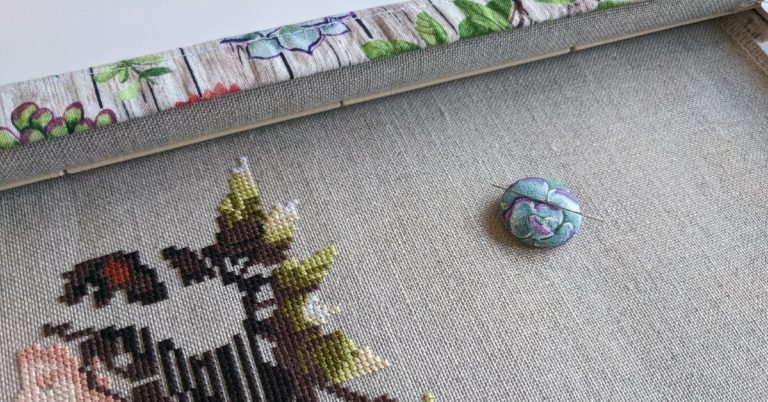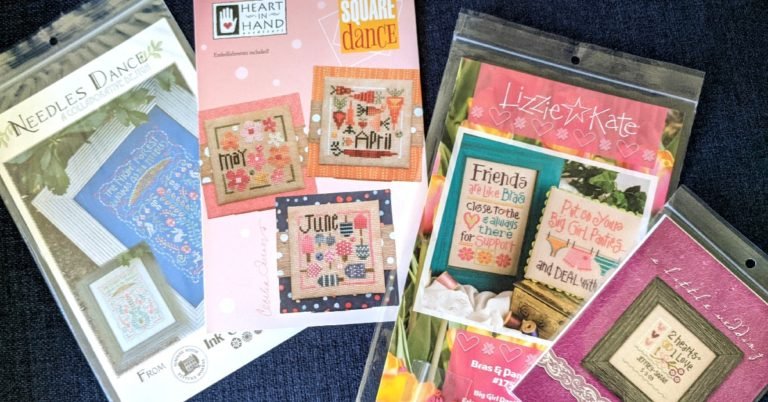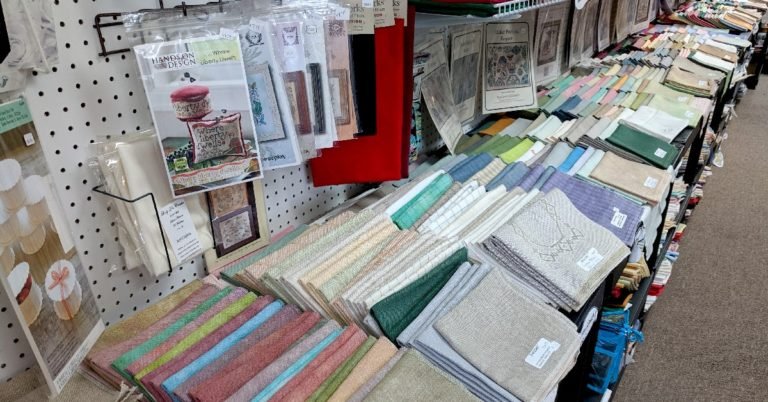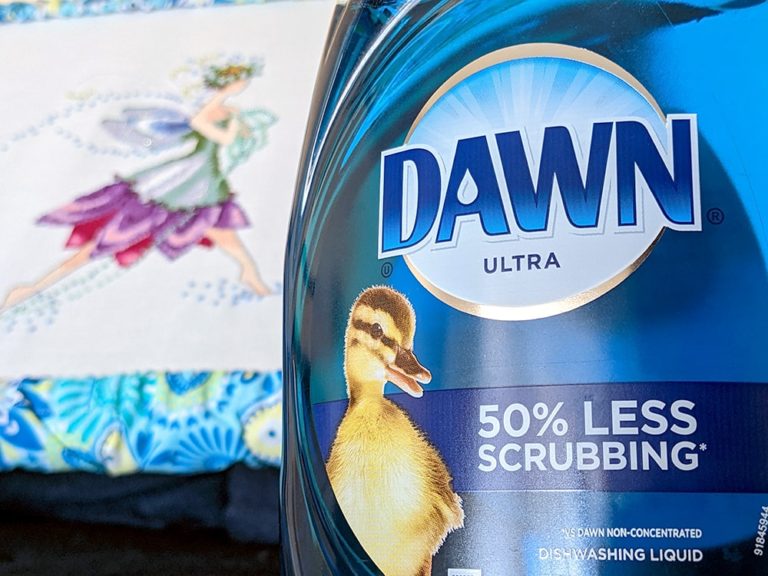9 Tips to Make Stitching with Metallic Floss Easier

Who doesn’t love adding some sparkle to their projects? Working with metallic floss is a great way to elevate your stitching.
The problem is that using metallic thread can be frustrating to cross stitch or backstitch.
There are different ways to achieve the shimmering result you want without the headache. You could try a blending filament or a different brand.
WANT FREE CROSS STITCH PATTERNS?
Sign up for my newsletter to get access.

Here are 9 tips to help you get the best results when stitching with metallic floss.
Use Shorter Pieces of Floss
Some of us stitch with abnormally long pieces of thread. It’s convenient to not have to thread your needle constantly.
However, when dealing with metallic floss, you want to limit the length to 12” maximum so that the thread will be less likely to tangle.
With different brands, I’ve found that there is some wiggle room with this suggestion. DMC Light Effects I use a shorter amount while with Kreinik I could get away with a longer amount.
Stitch with a Bigger Needle
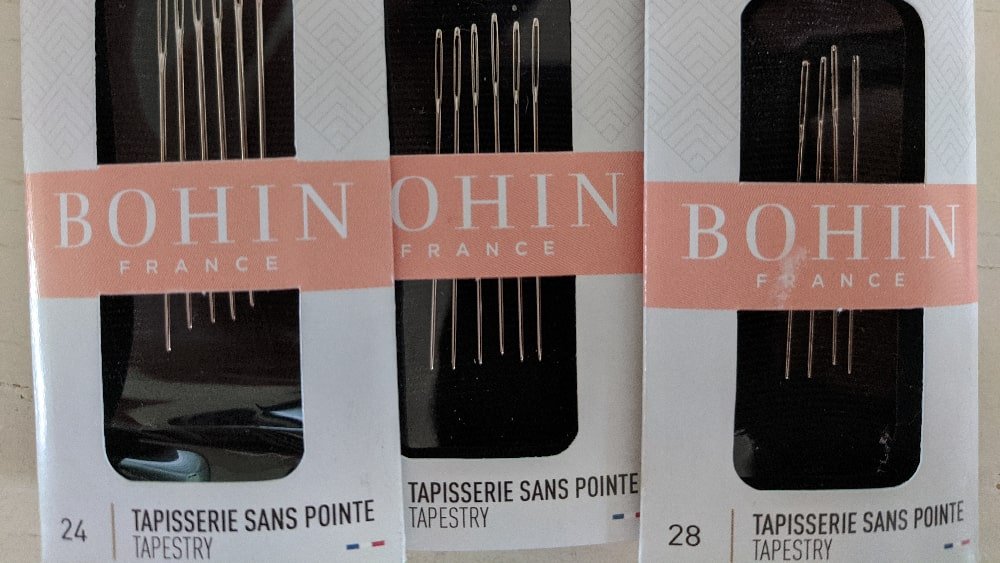
Depending on the brand of needle you use, you may have a hard time threading your needle. Some tapestry needles have wider eyes than others.
Regardless, I find that using a bigger sized needle will help.
Normally, I stitch with a size 28 tapestry needle, but for stitching with metallics I will stitch with a size 26 or 24. Ideally, a size 24 tapestry needle is the best option for stitching with metallic thread.
Leave a Long Tail
I like to leave a long tail and anchor it under more stitches than I normally would with regular floss.
If there aren’t any stitches to weave the metallic thread under, use a pin stitch.
Metallics have a mind of their own and have a tendency to wiggle their way out.
It is important to keep the thread securely fastened.
Use Thread Conditioner
Thread conditioners allow the metallic floss to be smoothed so that it is less likely to snag and tangle. The conditioner will help your thread glide easily through the fabric.
Back in the day, there used to be this magical conditioner that stitchers used called Thread Heaven. Unfortunately, it has been discontinued and is hard to get a hold of for a reasonable price.
There are currently a couple of alternatives to Thread Heaven including Thread Magic and beeswax.
Use the Right Number of Threads
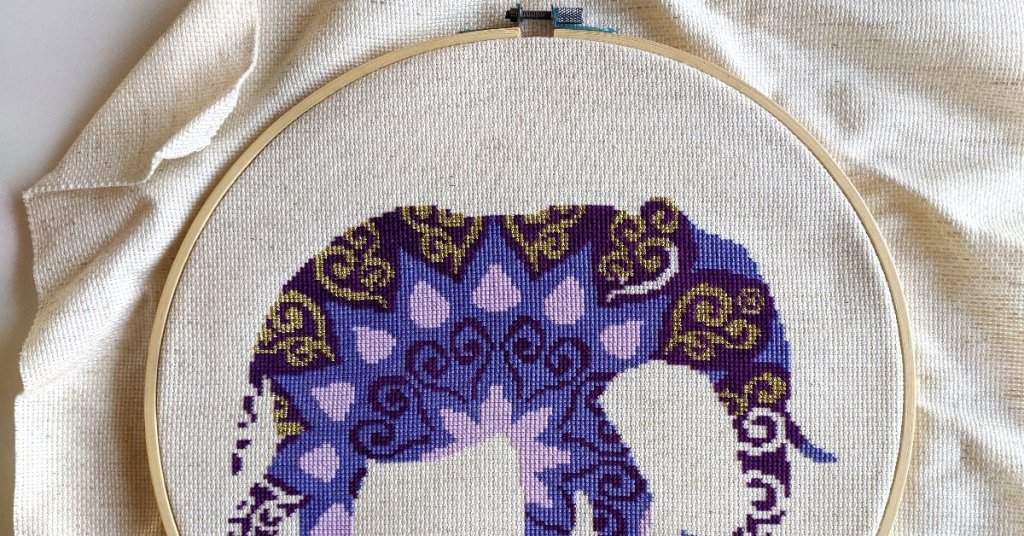
Metallic threads come in different thicknesses. Many times you will only need one strand to get the appropriate amount of coverage.
When I first started using metallics, I tried to use two strands just like I would when I would stitch with regular floss. That is not necessary. Plus, stitching with one strand is so much easier!
Depending on the brand of floss, you may need to separate the strands. However, many metallic threads you can use straight off the spool. It all depends on the thickness of the floss.
If you are using Kreinik, one strand of the #4 Very Fine braid is all you need.
Fold the Floss in Half and Loop it to the Needle
If you insist on using two strands for better coverage, it is best to fold your floss and tie it to your needle using a girth hitch knot.
Attaching the floss to your needle from the middle is the best way to prevent your metallic floss from fraying because the tails will be tied under to start your stitches.
The tails won’t repeatedly be dragged through the holes which contribute to the fraying.
Stitch With Metallic Threads Last
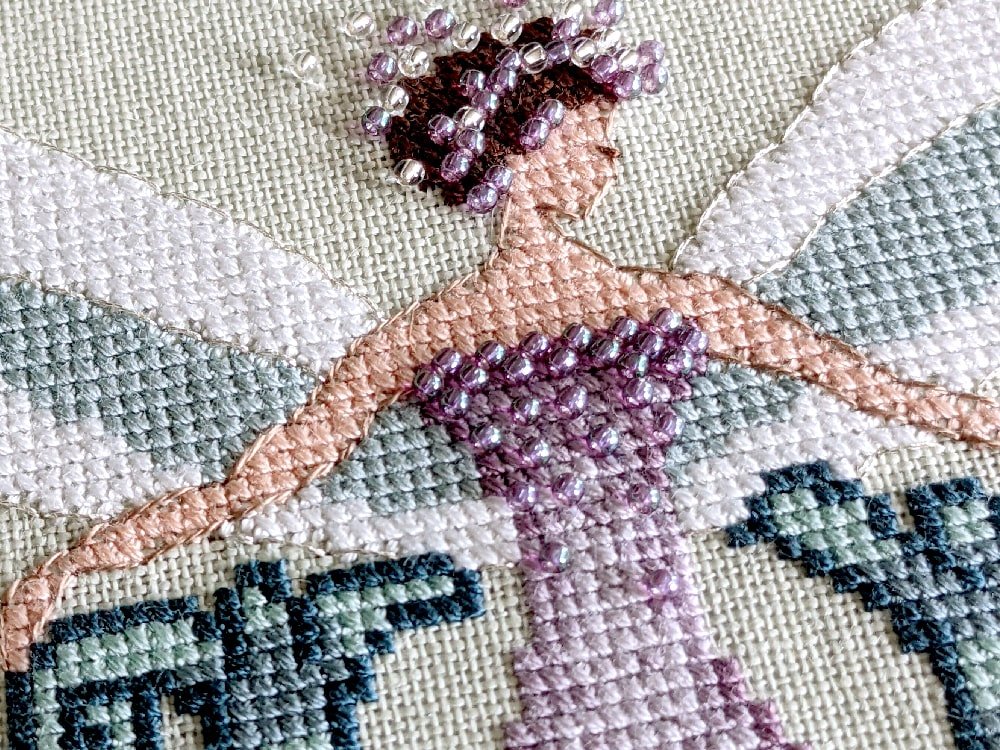
I save the metallics for last because I like to wash and iron my pieces.
You can learn more about washing cross stitch in my article, How To Wash Your Finished Cross Stitch.
Because metallic floss is made from polyester, there is a chance that it could melt. The care instructions say that you can wash the threads in lukewarm water and iron your piece on the reverse side at less than 248°F. I just don’t want to take that chance.
I have had no problems with the process of washing my project, ironing, then adding the metallic thread and other embellishments.
Try Different Brands
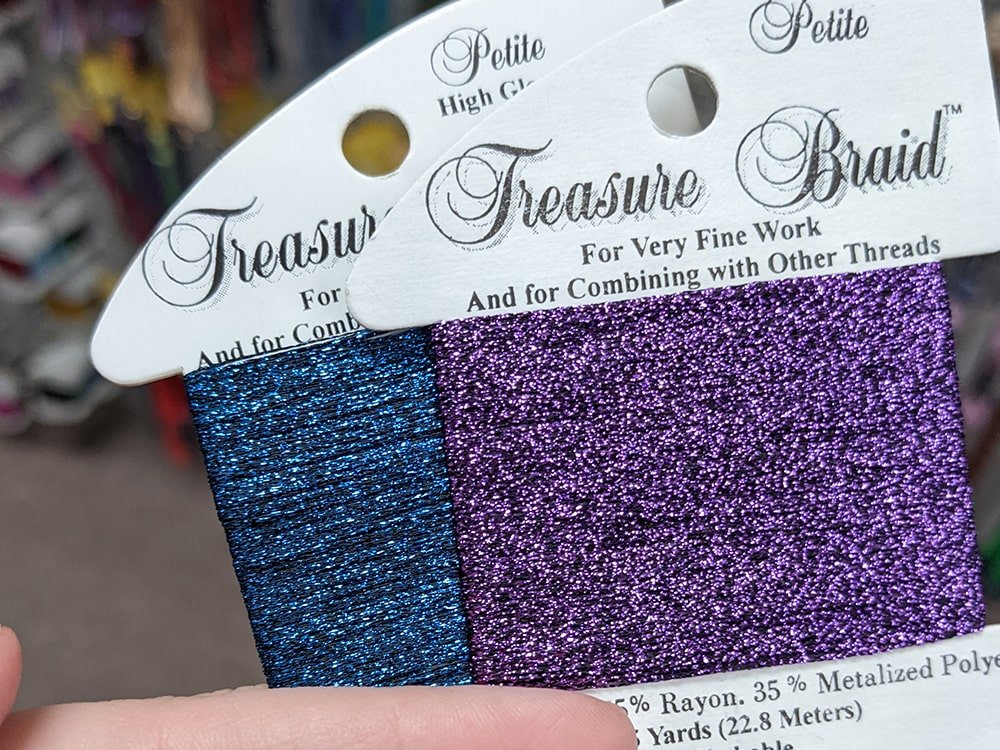
Not all metallic threads are created equal. The simple fact is that some brands are easier to work with than others.
The best metallic thread to stitch with according to popular opinion is the Rainbow Gallery Petite Treasure Braid.
The Petite Treasure Braids are 3-ply braided metallic made up of 65% rayon and 35% metalized polyester.
I would say that Kreinik is second. DMC Light Effects are the most difficult to work with.
Get the Same Sparkle Without the Headache
There are a few ways to add the extra pizazz without dealing with metallic floss. Try stitching with blending filament or DMC Mouliné Étoile as alternatives.
Blending filament is a super fine metallic thread that is meant to be combined with another floss. This means you stitch with one strand of the blending filament and a strand of regular floss to add that extra shine.
Because you are using only a tiny amount of metallic thread and also stitching with cotton, it should be a lot easier to control.
DMC Mouliné Étoile is another great option because it is mostly cotton and has a subtle shimmer effect. It’s very soft compared to typical metallic floss. There are 35 colors to choose from.
Final Thoughts
The result of working with metallic thread is totally worth the hassle.
Metallic thread has a mind of its own so don’t get discouraged if your stitches don’t look as neat as your regular floss stitches.
With a little patience, the desired effect is achievable.
Happy Stitching!


